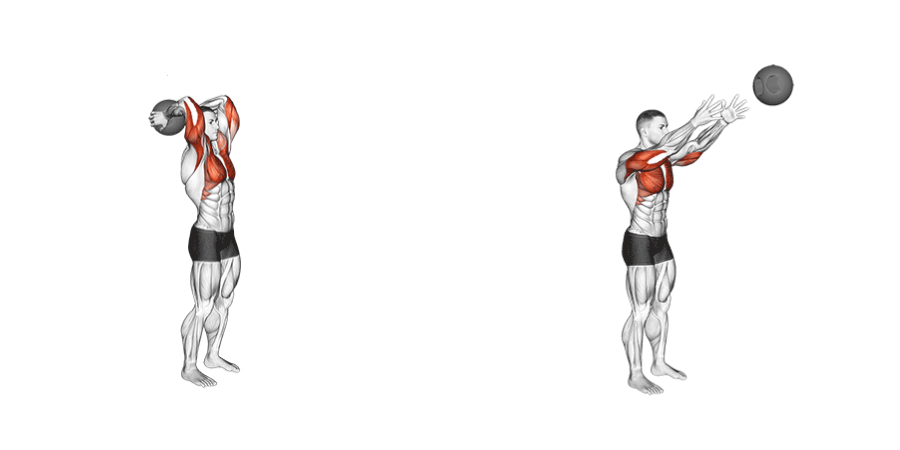Initially, medicine ball throws looked easy-peasy—just grab, toss, done. However, once I actually gave it a go, it hit me—there’s way more technique involved than I thought.
Sometimes it clicked and felt awesome; other times, it was a hot mess. Anyways, it’s definitely not as foolproof as it seems.
Anyway, after a few weeks of testing and asking around, I figured out what works (and what’s just fluff). So, if you’ve ever been curious about adding med ball work to your gym training—without overcomplicating it—here’s everything I wish I knew before I started.
Picking the Right Weight So You Don t Waste a Workout
When I first started messing with medicine ball throws, I grabbed the heaviest ball in the rack. Rookie mistake. It felt badass, sure—but my throws were slow, clunky, and honestly didn’t do much for power.
What I Learned The Hard Way
- Too heavy = slow and sloppy
- Too light = no challenge at all
- Just right = explosive, snappy, and fun to repeat
Eventually, I realized it’s not about maxing out—it’s about speed + intent. The ball should move fast. If I had to “muscle it up” just to throw, I was missing the point.
What’s the Right Weight? Depends on the Goal
Here’s what made the most sense once I broke it down:
- For speed + athletic power: 2–4 kg (feels snappy, great for quick release)
- For strength and power endurance: 5–8 kg (heavier, but still move it fast)
- For warm-ups or movement prep: 1–3 kg (super light, focus on rhythm and timing)
Basically:
- If I’m throwing for speed, I stay light.
- If I want to feel some resistance but keep things snappy, I grab a medium ball.
- If it feels like a grind to get it moving? Too heavy. Back down.
What Worked Best for Me
I landed on 6 kg for most throws. That gave me the right combo of resistance and speed without wrecking my rhythm. I’ll go heavier sometimes—like 8 kg for slams—but only when my form feels dialed in.
So yeah, don’t overthink it, but don’t ego-lift either. Start light, move clean, then build up.
Where Do You Even Throw These Things?
First time I did medicine ball throws in the gym, I slammed it straight onto the floor. Loud boom. Heads turned. One trainer gave me that “please don’t do that again” look. Lesson learned.
Wall Throws vs Turf Throws
After that, I started scoping out spots. Here’s what I figured out:
Wall throws:
- Pros: Super easy to track power and bounce. Great for chest passes, rotational throws.
- Cons: Not every wall is reinforced. Some echo like a shotgun blast.
- Tip: Look for a concrete wall or something labeled “wall ball station.” Avoid drywall—obviously.
Open turf:
- Pros: Awesome for overhead throws, granny-style tosses, and slams.
- Cons: You need space. Also, unless you’ve got eyes in the back of your head, that ball can take off and roll halfway across the gym—seriously.
- Tip: Set up near a turf lane or in a quieter corner, especially during non-peak hours.
What Most Commercial Gyms Offer
Most legit gyms have a designated spot for this—like a turf strip, a med ball cage, or a wall target. Some even have slam mats or ball rebounders. If you’re not sure, just ask the floor staff. Better than guessing and catching heat for it.
How I Avoid Annoying Anyone or Breaking Stuff
- Don’t throw near glass (obviously)
- Check if the ball is actually made for slamming (some aren’t)
- Pick low-traffic areas when doing power work
- And yeah—wipe the ball off after. It gets sweaty fast
So now, I’ve got my go-to spots locked in. It keeps things smooth—and nobody’s giving me side-eye anymore.
Benefits I Actually Felt vs What People Claim
You hear a lot of stuff about medicine ball throws online—how they’re great for power, core, speed, all that. But honestly? I didn’t believe most of it… until I started doing them consistently.
Here’s what I actually noticed after a few weeks:
More Pop in My Upper Body
Throwing the ball with intent—like real, full-speed intent—lit up my shoulders and chest in a way presses didn’t. It felt more like what I’d actually use in a sprint or change-of-direction drill.
No joke, even my push-ups felt snappier afterward.
Core Engagement Brutal In a Good Way
This isn’t just arm work. Every single throw made my abs fire. Especially rotational stuff. It kind of felt like doing planks—but at full speed and with more fun.
I’d finish a session and my core would be toast.
Sprint Starts and Explosiveness Improved
Not magically overnight, but after 3–4 weeks, my sprint starts felt way more aggressive. I could get off the line quicker. Same with jumps. It was like my body figured out how to “fire” faster.
It Was Actually… Fun?
I didn’t expect this, but it broke up the routine. Med ball work made me look forward to training days. No machines, no mirrors—just chucking stuff around with purpose.
But only when I actually threw with full effort. If you’re just lobbing it, you’re not gonna feel much.
Types of Medicine Ball Throws I Used Most
Once I figured out the basics, I started mixing up the types of medicine ball throws I did. Not just for variety—but because each one hit different muscles and had a different feel. Here are the ones that stuck in my routine.
Rotational Throw
Aka Side Throw into a Wall.
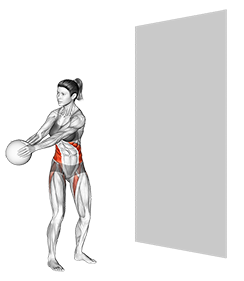
- How I do it: Stand sideways to a solid wall, knees slightly bent. Load my hips like I’m swinging a bat. Then boom—rotate and slam the medicine ball into the wall like I’m trying to crack it.
- Hits: Obliques, hips, glutes, even a bit of back and shoulders.
- My tip: Don’t arm it. Use your hips to start the movement. Think full-body twist, not just side arm toss.
Overhead Backward Throw
Good for Total Power Vertical Pop.
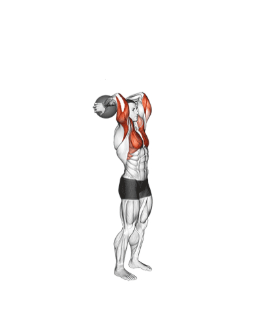
- How I do it: Stand tall, hold the ball with both hands, dip slightly, then throw it backwards over my head as far as I can. Think of a kettlebell swing—but launching it behind me.
- Hits: Glutes, hamstrings, lower back, shoulders.
- My tip: Don’t lean too far back—it’s not a backbend. Keep your core tight and focus on the “snap” through your hips.
Underhand Forward Throw
Perfect for Speed and Sprint Starts.
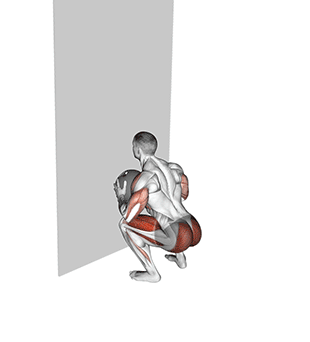
- How I do it: Hold the ball low between my legs, then drive up and forward like a standing broad jump—launching the ball out in front of me underhand-style.
- Hits: Quads, glutes, calves, and a ton of core.
- My tip: Push through the floor and get full triple extension (hips, knees, ankles). It’s all about explosive drive.
Chest Pass
For Quick Upper Body Explosiveness.
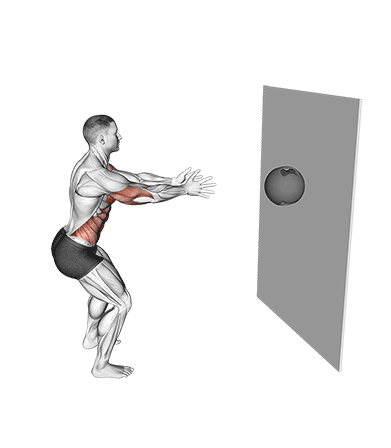
- How I do it: Face the wall, feet shoulder-width. Hold the ball at my chest and throw it straight ahead like a basketball pass—except with power.
- Hits: Chest, triceps, shoulders, core stabilizers.
- My tip: Don’t let your elbows flare. Keep it tight and fast—like a punch, not a shove.
Ball Slam
Fun Loud and Gassy.
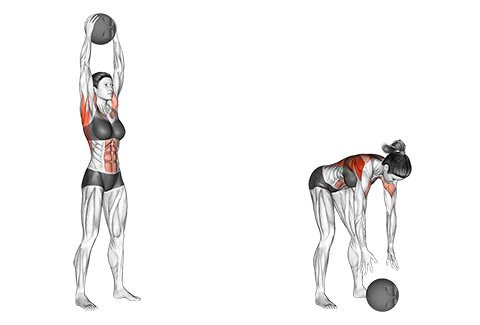
- How I do it: Hoist the ball up high, then spike it into the ground like I’m dropping the mic on leg day.
- Hits: Lats, core, legs, arms—pretty much full body.
- My tip: Make sure you’re using a slam ball, not a bouncy one. I learned that the hard way.
Rotating these five gave me way more variety and made each session feel fresh. Also helped me avoid burnout and hit different muscle groups. Some days I’d go all-out power; other days just use them as warm-up prep.
Weekly Plan + Little Tips That Made a Big Difference
Once I got the hang of medicine ball throws, I decided to build them into my weekly gym split. I didn’t overcomplicate it—I just made sure each day had a focus and I wasn’t throwing just to throw.
Here’s what worked for me:
| Day | Focus | Exercises | Sets x Reps | Notes |
|---|---|---|---|---|
| Mon | Upper Body Power | Chest Passes | 3 x 6–8 | Full effort, rest ~90 sec |
| Overhead Backward Throws | 3 x 5 | Focus on extension + clean release | ||
| Wed | Rotation & Core | Rotational Wall Throws (both sides) | 3 x 6 each side | Drive through the hips, not just arms |
| Ball Slams | 3 x 8 | Stay grounded, use whole body | ||
| Fri | Speed & Reactivity | Underhand Forward Throws | 3 x 5 | Quick triple extension |
| Quick Chest Passes (minimal wind-up) | 2 x 6 | Light ball, super fast release |
Quick Tips That Helped Me
- Start with lighter weights—move the ball fast, not heavy.
- Don’t chase fatigue—this isn’t conditioning work.
- Throw through the ball, not just at something.
- Record your throws—you’ll catch form mistakes fast.
- Use med ball throws as a warm-up before big lifts—it fires everything up without frying you.
At the end of the day, medicine ball throws became a no-brainer in my routine—fast, powerful, and perfect for the commercial gym setup. I’ll keep them in the mix because they just work.

Hi, I’m the editor here at Leadman Fitness. We’re a manufacturer focused on producing top-quality barbells, plates, kettlebells, dumbbells, and strength training gear. I’ve been into sports and fitness for years, and I know my way around all kinds of gym equipment—both from using it and helping create it.
I spend a lot of time understanding the real problems people run into in the gym—whether it’s beginners trying to pick the right gear or experienced lifters looking for something more durable. I stay in close touch with our production team and talk directly with other equipment makers, so we’re always improving based on what real lifters and coaches are looking for.
What I share comes from hands-on experience—stuff that actually helps people train better, not just in theory, but in real gyms.
